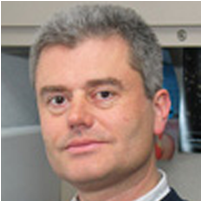 Welcome to the fifth issue of the Journal of Astronomical Telescopes, Instruments, and Systems (JATIS) and the first special section devoted to coronagraphs for the WFIRST-AFTA space telescope. A broad range of peer-reviewed papers covering every aspect of coronagraph technologies are featured in this edition, from exoplanet yield statistics for WFIRST-AFTA to occulting mask design and fabrication. Several other special sections are in preparation for JATIS, and we encourage prospective guest editors to propose new topics. Together with my board of associate editors, I would like to encourage the submission of new ideas for special sections that address specific subjects or projects. In particular we are interested in special sections that address technologies for extremely large ground-based telescopes and the design and implementation of integral field spectrographs.
Welcome to the fifth issue of the Journal of Astronomical Telescopes, Instruments, and Systems (JATIS) and the first special section devoted to coronagraphs for the WFIRST-AFTA space telescope. A broad range of peer-reviewed papers covering every aspect of coronagraph technologies are featured in this edition, from exoplanet yield statistics for WFIRST-AFTA to occulting mask design and fabrication. Several other special sections are in preparation for JATIS, and we encourage prospective guest editors to propose new topics. Together with my board of associate editors, I would like to encourage the submission of new ideas for special sections that address specific subjects or projects. In particular we are interested in special sections that address technologies for extremely large ground-based telescopes and the design and implementation of integral field spectrographs.
This year SPIE will hold the Astronomical Telescopes and Instrumentation Conference in Edinburgh, Scotland. We would like to remind authors of accepted papers and posters to consider preparing their presentation for publication in JATIS at the outset, so that they might publish their work in our peer-reviewed journal. A major motivation in the creation of the journal was advocacy by the instrumentation community for a means of publishing high-quality presentations from this conference in a refereed journal. JATIS offers the opportunity to do just this, and so we urge presenters to consider this option.
JATIS publishes peer-reviewed papers covering this diverse range of topics in astronomical instrumentation, systems and techniques, including:
• X-ray, gamma-ray, and gravitational-wave space telescopes and instrumentation
• Ultraviolet, visible, and infrared space telescopes and instrumentation
• Far-infrared, submillimeter, millimeter, and radio telescopes and instrumentation
• Design of space observatories including space environments, orbit design, deployments, and communications
• Telescope, instrumentation, and analysis techniques for high-contrast imaging of exoplanets
• Ground-based telescopes and instrumentation
• Pointing and control systems, including design, algorithms, and attitude control
• Alignment, integration, and testing of telescopes and supporting instrumentation
• Design of ground-based observatory enclosures and site testing
• Adaptive optics and interferometry for optical/infrared astronomy
• Detector systems for astronomical instrumentation
• System engineering for large observatories
• Imaging camera and spectrograph design
• Integrated modeling of telescopes and instrumentation
• Optical design and manufacturing techniques
• Innovative technologies and materials
• Data analysis techniques, data mining and statistics
• Observatory operations and science observation scheduling
JATIS is printed quarterly and possibly will increase in frequency as the journal grows. In addition, papers are published online shortly after acceptance, with new papers added regularly to each online issue as they are approved for publication. Authors also have the option of obtaining permanent open access for their papers.


